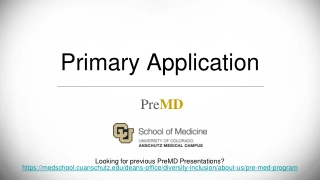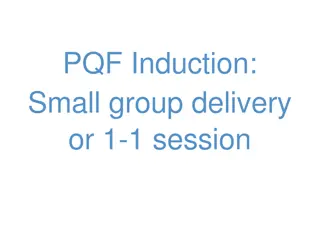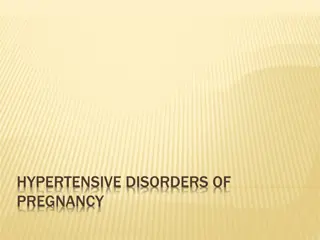
Child Public Health: Promoting Well-being and Equity in Early Childhood
Learn about Child Public Health (CPH) and its importance in promoting children's health, preventing disease, and fostering equity. Discover the barriers, aims, factors affecting child health, and strategies to improve child health outcomes.
Download Presentation

Please find below an Image/Link to download the presentation.
The content on the website is provided AS IS for your information and personal use only. It may not be sold, licensed, or shared on other websites without obtaining consent from the author. If you encounter any issues during the download, it is possible that the publisher has removed the file from their server.
You are allowed to download the files provided on this website for personal or commercial use, subject to the condition that they are used lawfully. All files are the property of their respective owners.
The content on the website is provided AS IS for your information and personal use only. It may not be sold, licensed, or shared on other websites without obtaining consent from the author.
E N D
Presentation Transcript
By Dr Sabah Mohamed Abdelkader Assist Prof of Public Health
Child public health (CPH) Defined as: organized society to develop public health policies to promote children s and young people s health, to prevent disease, to foster equity within a framework of development . efforts of sustainable
Importance of pre-school stage Invisible population. Lacking freedom of making choice. Influenced by others, parents, grandparents, media.
Barriers Partnership with parents is complex depending on factors like: 1. Time. Resource availability. Commitment. Mutual respect. Trust between all parties.
Aims of child public health Child health promotion. Disease prevention and child protection. Improving health and wellbeing of future population. Working with parents, agencies, and groups to develop early intervention strategies.
Factors affecting child health Health inequality. Socio-economic factors, many live in deprived areas. Specific risk factors. ???? Parents. Age. Sex. Genetics.
How to improve child health? Individual health promotion, as early promotion improve health in adulthood, and being a cost- effectiveapproach for futuregeneration. Targeting parents as children influence. Intensive home visiting for children and families by health visitorsand midwives forearly intervention. are under their
Outcomes of CPH 1.Be healthy. 2. Stay safe. 3. Enjoyand achieve. 4. Make a positive contribution. 5. Achieve economic wellbeing. Understanding health inequalities is crucial for policy development and directing services according to HNA.
Introduction Healthy school setting is defined as: a place where young people engage in daily education activities in which environmental, personal factors interact to affect health and wellbeing . (WHO) organizational and
Importance of school children who adopt continue these habits intoadulthood. Educational attainment plays a role in determining future health status, healthy children perform better academically. Young unhealthy behaviours
Objectives of school health Health promotion of school children. Prevention and control of health hazards. Rehabilitation of the handicapped. Provision of health appraisal.
A- Health promotion Adequate nutrition. Sanitary school environment. Fulfilling needs of mental development. Physical exercise and activities. Prevention of mental fatigue. Social activities and recreation.
Role of school School feeding program. Nutritional education of children and families. Dietary supplementation according to local deficiency problems. Preventionand control of parasitic diseases. Health appraisal forearly detection of malnutrition.
School environment Value of sanitary environment: Basic preventive measure of communicable diseases. Contributes to health promotion of children. Provide feeling of comfort, better achievement. Gives good example of clean environment.
Components of school environment 1. School building: Must be away from sources of noise, pollution, with suitable area for playground. 2. Classrooms: * Suitable shape, area, and number of pupils. * Adequate ventilation, windows on both side walls (20% of floor s area) * Adequate lighting. * Properly designed desks and seats.
3. Water supply: Safe source and suitable number of sanitary drinking fountains. 4. Waste disposal: Collection and disposal of refuse. Suitable number of clean promises (W.C) 5. Insect control: 6. Food sanitation: Sanitary kitchen, canteen and stores. Food handlers sanitary requirements. Food stuff fulfill specified requirements
B. Prevention of health hazards Infectious diseases. 2. Parasitic diseases. 3. Nutritional deficiencies. 4. Accidents and injuries. 1.
1. Infectious diseases Predisposing factors: Insanitary school environment. Faulty habits of children and personnel. Lowered body resistance to infection. Presence of reservoirs of infections. Overall effect of infectious diseases: May cause disease outbreak. Wasting time, long treatment and bed rest. Prevention: Assignment for those who didn t submit gp assign
2. Parasitic diseases Predisposing factors: Insanitary school environment. Bad habits. Ineffective health service, case finding and treatment. Hazards of parasitic diseases: Diminished physical and mental development. Impaired health, activity and vitality. Contribute to malnutrition. Resulting in morbidity and complications.
3. Nutritional deficiencies Predisposing factors: Inadequate home and school feeding. Nutrition ignorance of child and family, faulty food habits (breakfast, snacks, sweets, drinks). Parasitic diseases. Manifestations: General picture: impaired appetite, easy fatigue, lack of alertness, weak muscles. Specific picture: according to type (assign)
4. Accidents and injuries Can be wounds, bleeding, broken teeth, eye injuries, fractures . Etc. Control: First aid and emergency services including transport and referral if necessary. Prevention: Education of pupils for safety rules. Supervising them during play. Removing any source of injury in school.
C- Rehabilitation of handicapped Some formsof handicaps in schools: Heartdisease: congenital orrheumatic. Musculoskeletal deformities: polio. Impaired vision: errors of refraction. Impaired hearing: acquired from neglected chronic O.M or injury by foreign body.
Medical care in schools Includes: Health appraisal. Firstaid service.
1. Health appraisal Comprehensive medical examination. Screening tests. Clinical services. Surveystudy.
2. First aid service First aid facilities and trained personnel must be available for rapid management of emergency or transferring to medical center if necessary.






















